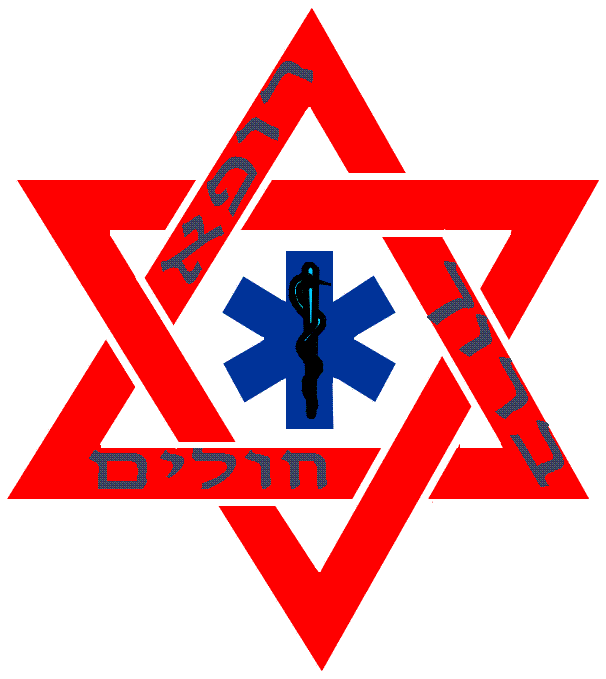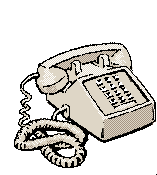|

Home

About Us

Kosher Meds

Safety

Bikur Cholim

Links

Tehilim

Shopping List

Thank You
| |
Safe
Babysitting
This page is designed to help you follow the proper safety procedures when
leaving your childin the care of a baby-sitter. However, it does not cover all topics in
depth. A First Aid and CPR course is highly recommended for yourself and for anyone
entrusted with the care of your children.
Many parents hire unqualified baby-sitters or fail to give the sitter proper information
and instructions necessary to insure the safety of their children. Being informed about
safety will help you avoid serious mistakes that might cause injury or even cost a life.
Check age, references, and experience of your prospective baby-sitter. The baby-sitters
you hire should be old enough and responsible enough to handle any emergency.
Please read this page carefully before selecting baby-sitters for your children. Before
hiring a baby sitter, secure the safety of your home by following the procedures in the
Parent’s Guide. Then have your baby-sitter read the baby-sitters Guide and Emergency
Procedures. Make sure they understand everything clearly before entrusting your children
to their care.
PARENT’S GUIDE
BEFORE YOU LEAVE...
Give sitter exact instructions with regard to naps,
friends, snacks, homework and bedtime.
Point out medications, blankets, bottles, pacifiers, diapers, clothing, toys, and
flashlights, etc.
Tell sitter which rooms are off limits.
Show where meat and dairy utensils are kept.
Let sitter know what she may use for herself (e.g. food, books, phone)
Give instructions for alarms, thermostat, fuses, etc.
Point out fire extinguisher and show how to use it.
Discuss escape route for emergency evacuation.
Tell sitter which neighbor to call for assistance.
Set rules; who is allowed to enter the home in your absence.
Tell sitter to write down messages accurately.
Give approximate time of your return.
Tell sitter where you can be reached.
Lock doors and windows.
Make sure that outside lighting is working.
House numbers should be clearly visible day or night.
Give key to two neighbors for lockout or emergency.
Make sure the sitter is escorted safely home; wait until the sitter enters her house
before leaving.
UPDATE YOUR MEDICINE CABINET
WITH ITEMS SUCH AS:
Assorted band aids
Rolls of 2-inch gauze, and small and large gauze pads
Washing agents for wounds
Scissors
Adhesive tape to apply bandages
Cotton swabs to apply medications and ointments
Ace bandage
Ice pack for sprains and strains
Sunscreen to prevent overexposure to sunlight
Calamine lotion and cotton balls to relieve pain and itching from sunburn and bites
Children’s and adult pain and fever medicine
Syrup of ipecac and activated charcoal - to be used only if advised by the Poison
Control Center
Insect repellent to protect against bites when going outdoors (especially at dusk)
”Sting ease” to relieve pain from bee sting
Tweezers and a bee sting kit to be used if allergic to bees
Thermometer
Alcohol
Vaseline
Diaper rash ointment and baby wipes
THE
BABY-SITTERS’ GUIDE  Discipline only with parental permission
Follow schedule for naps, meals, bedtime
Clean up after meals and play time
Do not leave food out of the refrigerator for long periods of time
Close the safety harness when putting baby into a carriage, infant seat or high chair
Never leave baby on dressing table, bed, chair
Always raise the sides of the crib when baby is inside
Wash hands after diapering and before meals
Keep baby safe from older siblings
Never tell unknown callers that you are alone
Keep personal phone calls short
Do not go to sleep when children are up
Be open and honest with parents; report problems and difficulties with children
Do not repeat what you see in other people’s homes
Discipline only with parental permission
Follow schedule for naps, meals, bedtime
Clean up after meals and play time
Do not leave food out of the refrigerator for long periods of time
Close the safety harness when putting baby into a carriage, infant seat or high chair
Never leave baby on dressing table, bed, chair
Always raise the sides of the crib when baby is inside
Wash hands after diapering and before meals
Keep baby safe from older siblings
Never tell unknown callers that you are alone
Keep personal phone calls short
Do not go to sleep when children are up
Be open and honest with parents; report problems and difficulties with children
Do not repeat what you see in other people’s homes
MAKE SURE THAT...
Pins and keys are kept away from outlets
All stairways are free of obstacles
Children don’t sit on sills or lean against screens
There is no playing with doors; watch little fingers!
Tthere is no jumping around on bunk beds
Sharp knives and scissors are out of reach
Rakes, branches, brooms, are not left around
Small toys (e.g. ‘lego’, buttons)are out of a child's reach
Plastic cleaner’s bags are tied in knots and discarded
MEALS
Test foods and bottles to assure proper
temperature
Hold infant during feeding; do not prop bottle
Be aware of opened can lids
Do not allow child near any electrical appliance
Never use appliances if you have wet hands
Do not microwave baby bottles
Keep hot liquids away from surface edges
Beware of child pulling off tablecloth
Do not allow standing on table or chair
Strap child in high-chair, never leave unattended
Cut food into small pieces when feeding
Don’t give small candies or taffies to young children
BATH TIME
- Never leave child alone, even for phone or doorbell
- Always close the hot water before cold
- Test water temperature before bathing a child
- Do not allow child to play with faucets
- Do not allow child to stand or jump in bathtub
- Drain bathtub when not in use
- Keep bathroom floor dry
- Do not touch blow dryer with wet hands
- Unplug blow dryer when not in use
|
 |
BEDTIME
Remove any small items from crib and bed
Do not use a pillow or large blanket for infants
Keep crib sides up at all times
Check infants and children often
WHEN WATCHING CHILDREN OUTDOORS
Never leave a toddler in a wading pool
unattended
Empty wadding pool and turn over when not in use
Do not overload or unbalance carriages
Keep children in shady area when weather is warm
Have child drink plenty of liquids in warm weather
Do not let child walk barefoot; avoid sharp objects
Keep tools and lawn mower away from children
Avoid places that have poison ivy
Do not let child eat any berries or plants
Do not allow child to tease animals or insects
Use insect repellent when outdoors if necessary
Use caution swinging a bat, throwing balls or a frisbee
Always hold children’s hands when crossing street
Use streets that have crossing guards or traffic lights
Don’t cross between parked cars; cross at corner
Never let a child follow a ball into the street
Whenever possible, walk on sidewalk, not on road. When walking on road, stay on left
side facing traffic
Never accept rides from strangers
Never let children walk alone after dark
Keep key with you at all times
Use clothes appropriate for weather conditions
In a lightning storm, run into nearest buildings or car
Put sunscreen on a child to prevent sunburn
Don’t allow sunbathing - especially 10 A.M.- 2 P.M.
Have children wear hats and t-shirts in the sun
BIKE SAFETY RULES
Bike should fit the child’s size; when
child is in sitting position, toes should touch the ground
Child must wear safety helmet
Child should always keep both hands on bike handles
Child must walk bike across busy intersections
When walking or riding a bike, beware of cars backing out or turning into driveways and
parking lots
Watch for car doors opening and parked cars pulling out suddenly
Watch out for drain grates, broken pavement, ditches and sand
Only one person at a time should ride the bike
Older children should obey traffic rules
PLAYGROUNDS
Children must be supervised at all times
Check if equipment is sturdy and in good condition
Do nut use slippery or loose equipment
Child must hold equipment with both hands
A child must remain seated while in motion
Don’t kneel, stand, walk in front, behind or under equipment in motion
If child becomes pale or scared, stop the equipment and take him off
Allow only one person at a time on a swing
When using seesaw, don’t keep feet under the board
When getting off, let seesaw down slowly
Don’t stand or run across seesaw or up the slide
Climb stairs of slide one at a time
Make sure slide, and area in front of slide, is clear
Descend on slide in sitting position with legs in front
WHEN RETURNING FROM OUTDOORS
Before entering house, always check to see if
it is safe
Check for broken windows, a ladder or opened front or back doors that might tell you
that someone has entered. If so, do not enter house; go to nearest phone and call the
parent or police
FIRE PREVENTION
Do not overload extension cord or sockets
Unplug extension cord when not in use
Keep matches out of child's reach
Never use gas stove or oven to warm up the house
Cook only with permission from parent
Do not wear loose-fitted sleeves when cooking
A child with long hair must not keep her back to any candles or open fire
When cooking, turn all pot handles inward on stove
Avoid burns, by using potholders and making sure they are dry
Keep off counters and keep away from oven and stove even when turned off
Do not pour water on a grease fire, use baking soda or fire extinguisher
Never use spray cans near fires
Use portable heaters that shut off automatically when hit or turned over; keep portable
heaters away from children, clothing, curtains and linen
IF A PERSON
CATCHES ON FIRE:
STOP, DROP AND ROLL ON THE GROUND
IF THERE IS SMOKE IN THE ROOM
Crawl on the floor; heat rises
Feel the door; if it is not hot, get out quickly
When leaving, close the door behind you
If the door is hot, do not open it
Shut fan or air conditioner
Put blankets or towels under door to keep smoke out
Put wet cloth against mouth to help breathing
Be aware that a window can shatter from heat
If on first or second floor and can’t exit, climb out of the window
If higher than second floor, use a fire ladder or fire escape to leave; if not possible,
wave something out of the window to draw attention
First remove all children from house
Go directly to designated outdoor meeting place
Notify fire department from a neighbor’s house or a phone booth
NEVER GO BACK INTO A
BURNING BUILDING!
Boruch Rofeh Cholim 1999
Permission is granted to print and redistribute this material for non-commercial purposes
as long as credit line is included.
|


